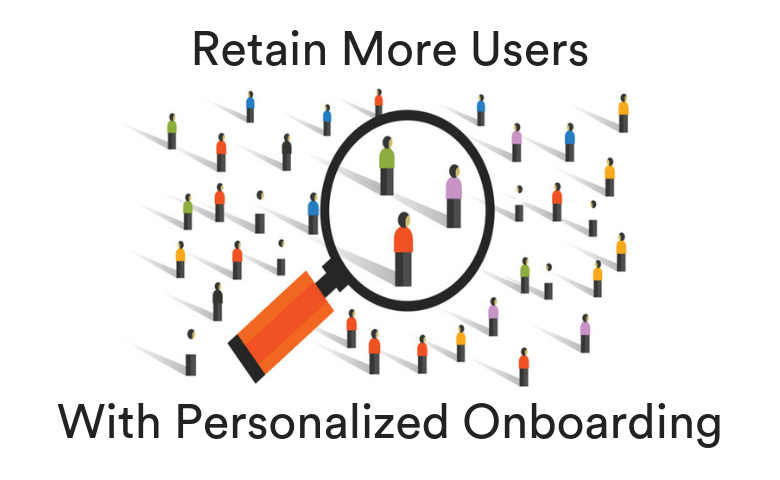
Retain More Users With Personalized Onboarding

Good user onboarding is crucial to long-term user retention. Users who quickly see the value in your product are likely to stick with you, so it's crucial to make your user onboarding process the best it can be. A great way to achieve this is through personalized onboarding. This can take a variety of forms, but the crucial point is that you tailor a user's first experience of your product and your brand. This helps them achieve success faster, and helps you to keep them coming back.
Personalized messaging
The welcome email is a perfect opportunity to start personalizing. Something as simple as using the person's first name in the subject line can have huge effects. It's been shown that personalized emails have a 26% higher open rate than other marketing emails!
However, that's just the tip of the iceberg when it comes to using email for personalized onboarding. An even more effective strategy is to use the information you have about your users - such as their location, company, or job title - to segment your onboarding process. After all, people in different roles will want to achieve different things with your software. The sooner you can show your users how to achieve what they want to achieve, the better! For example, if you're making a product that might be used by people in a variety of job roles, customizing onboarding messages based on job title could be highly effective. This would increase the likelihood that onboarding material will be relevant for the user, making them more likely to read it and take action.
Subsequent onboarding emails can also be personalized based on certain actions that a user has or has not taking in your software. This is known as action-based onboarding. This allows you to nudge users who have not yet taken key actions to complete those actions, while users who have can be shown additional features to improve their experience.
Personalized onboarding journeys
Of course, emails are not the only way you'll be onboarding your new users. The in-app onboarding process is arguably the most important way for your users to get to grips with using your software. This, too, can benefit from personalization. In particular, many SaaS products are complex, and there are any number of features you could choose to introduce to new users. A great idea in this situation can be to allow your users to choose how much detail they want in their onboarding. Offering different onboarding streams, such as "beginner" or "expert", allows you to tailor the process based on what users want to get out of it.
If you have more data about your users, you can tailor their experience even further, rather than presenting generic welcome screens and introducing features. If you know why people have come to your product, you can get them started right away with whatever their specific needs are. For instance, Displayr solves a huge variety of problems. These range from creating basic charts through to doing advanced data analysis. If somebody clicks through to the product from a page about creating bar charts, they probably have different needs from somebody who came from a page about choice-based conjoint analysis. Based on this information, we can customize the first experience these two users have. This makes the experience of the product far better for the user.
So, personalized onboarding makes it easier for your users to see the value in your product, creates a smoother onboarding journey, and leads to higher retention rates. If you aren't personalizing your user onboarding, you and your users are missing out!



